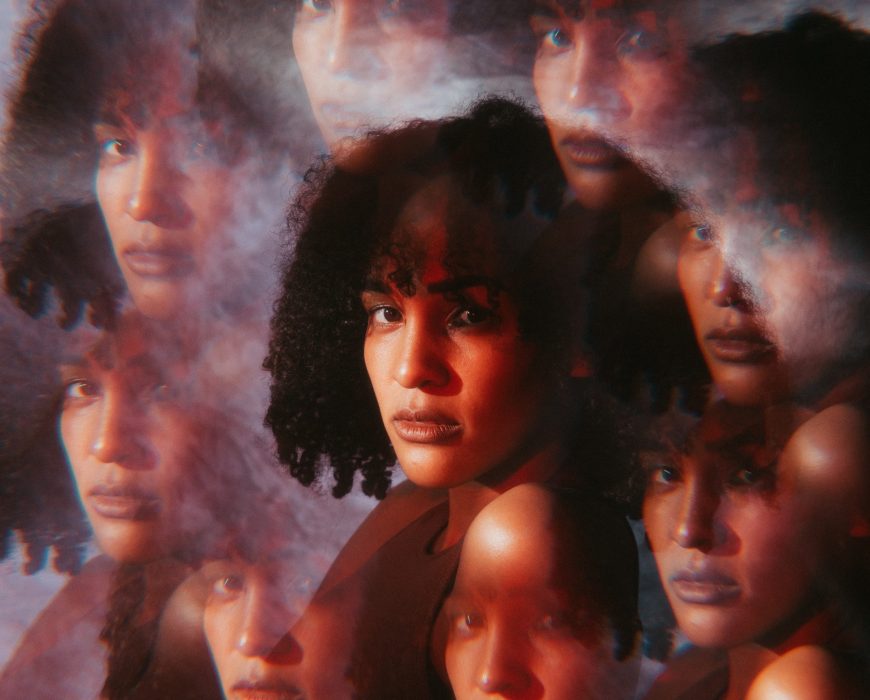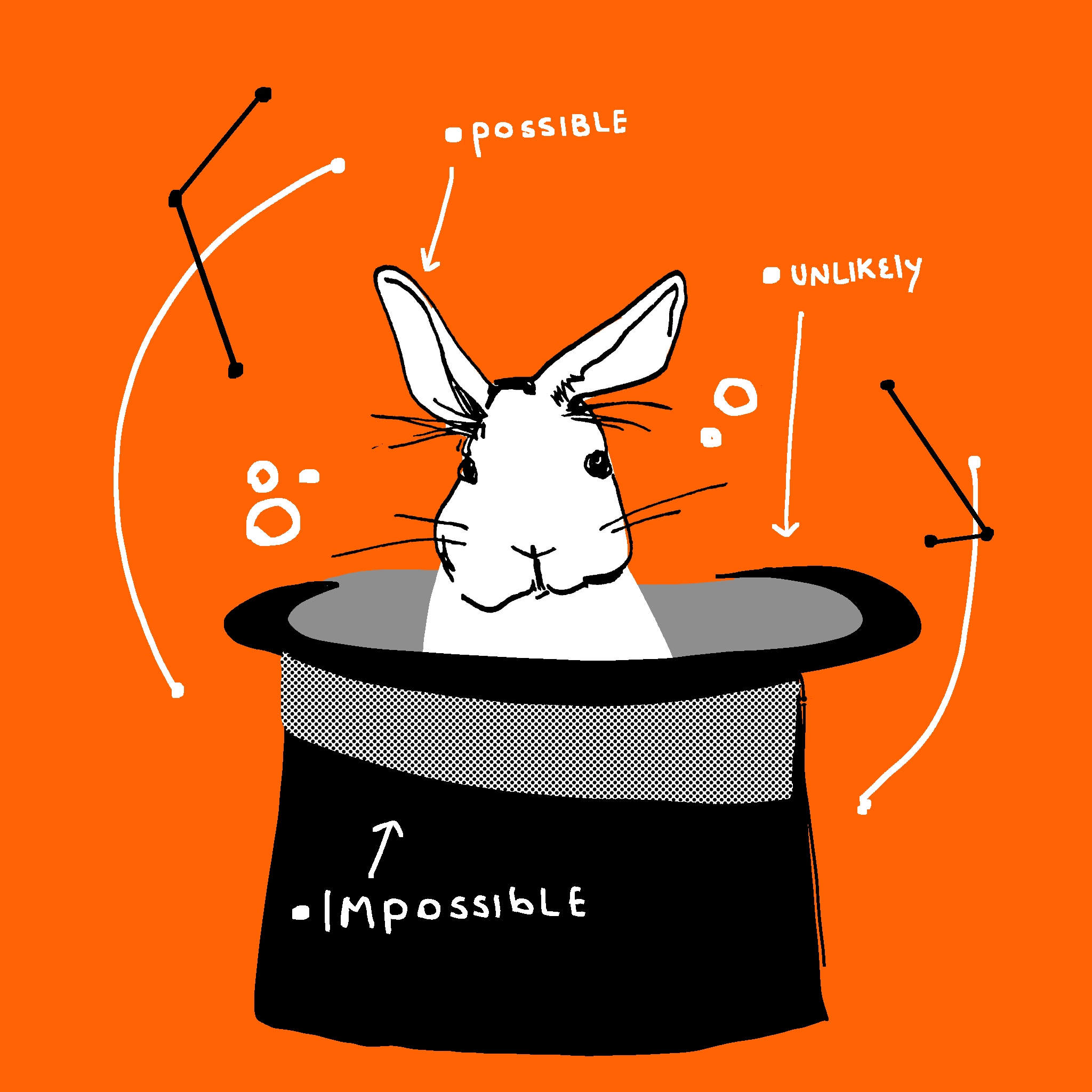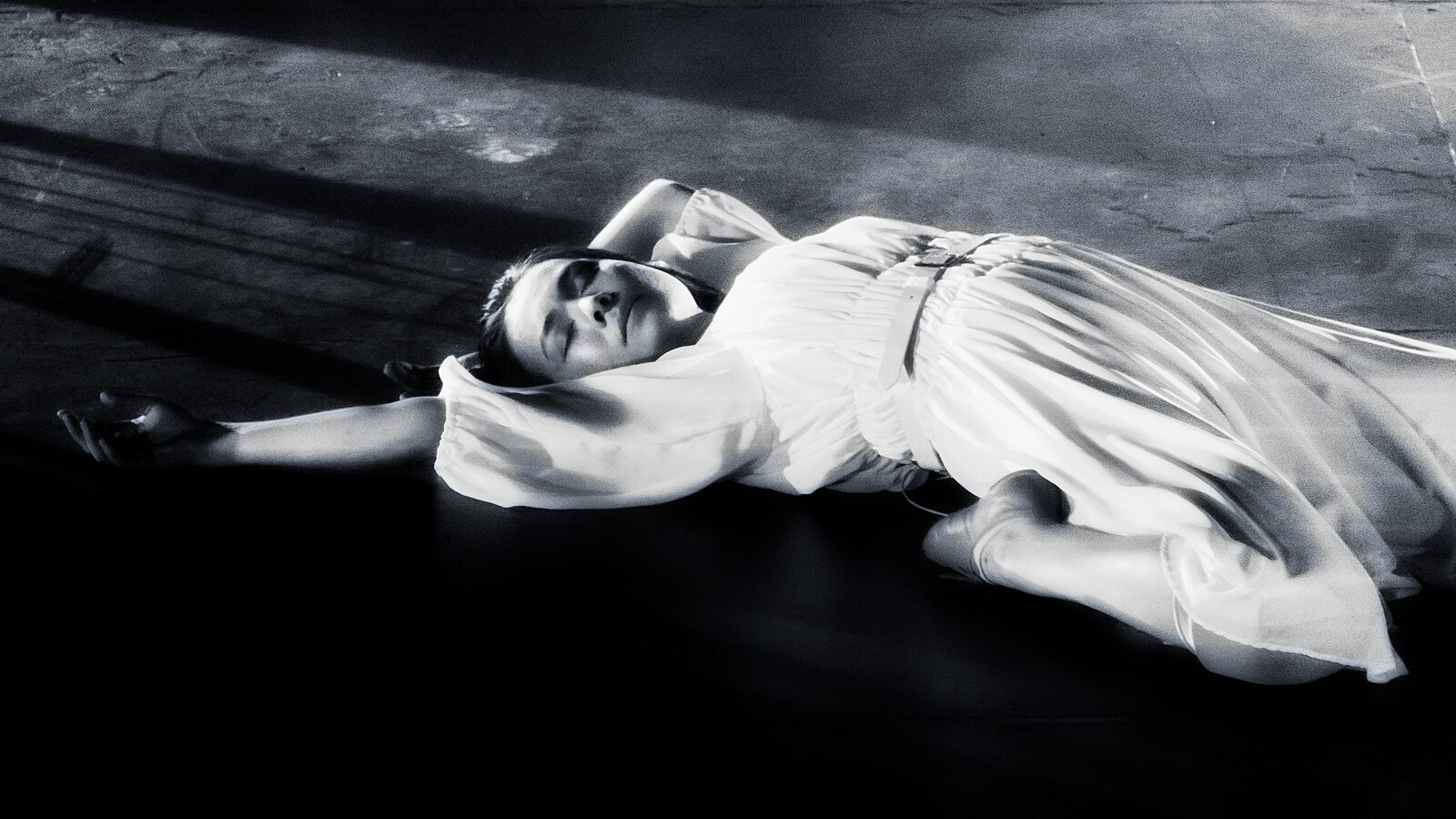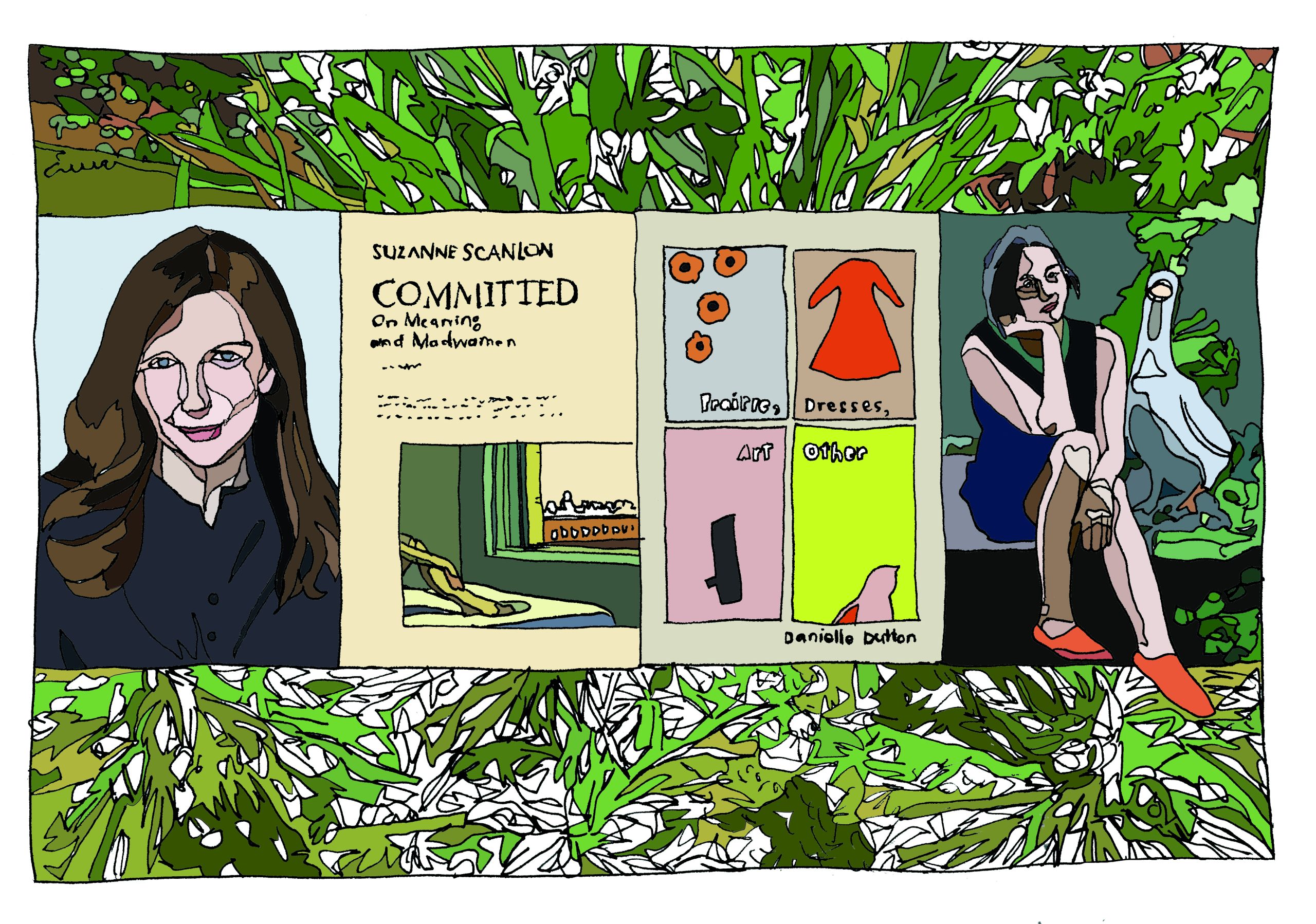Interviews
Stories That Wrestle With Black Girls’ Coming of Age
Venita Blackburn on being the flash fiction propagandist of her time and writing "How to Wrestle a Girl" for young women of color

The flash fiction literary community is like an extended family. If you are a writer and reader of flash, it is in all likelihood that your inner circle of literary peeps are other flash fiction folks or, you at least, know of one another. Six degrees is more like one or two in this community. And if you are a writer of flash, you know who Venita Blackburn is.
I became an admirer of Blackburn’s while working at SmokeLong Quarterly, one of the top literary journals that specialize in flash fiction. To me, she is one of those writers who has transcended the genre and placed it into the pathway of traditional fiction with her book Black Jesus and Other Superheroes, which was a finalist for the PEN/Bingham award for debut fiction, finalist for the NYPL Young Lions award and the recipient of the PEN America Los Angeles literary prize in fiction.
Divided into two parts, her new collection, How to Wrestle a Girl, extends the universe for two characters from Black Jesus but also explores new characters who are fighting to figure out how to navigate life as a girl, as a woman, and, often times, as queer person on the cusp of a transitional stage in their lives. The characters confront grief, sexuality, and uncertainty often with humor that works to undercut the emotions and make the moments feel even more true.
I spoke with Blackburn via Zoom, of course, about flash fiction, of course, but also the young women of color she wrote this book for, and also Gen Z and what the “Zeds” are reading and writing these days.
TLC: How to Wrestle a Girl feels like two collections in one, and yet, also not that. Part I seems to be different and separate from Part II because Part II involves the same characters like a novella-in-flash or a novella-in-stories. But the parts share themes and a particular style and voice. Can you talk about the choice to combine these two parts in the same collection?
VB: All right, I’m going to spill all the tea for how this was designed. I don’t know if I’m supposed to be more dignified and keep mystery like it’s all very careful.
Yeah, no vision, cloud, or whatever. I intended to write a novel-in-flash. That was my main goal when I sat down to write this, but I am very much a short story writer. I love the form. And also, I love flash fiction. So that too, it’s like a primary thing for me.
So, all of the things that were written here in the book were written at the same time. And I kept focus on doing the novel-in-flash. But then other story ideas will come to me about similar situations, or a speech pattern, or some kind of idea, and I just had to honor it. I just got to do that. So, I will go write this 2000 word side story over the weekend, and just be with that—kind of like a meditation—and try to go back to the vision.
I did feel very connected to this kind of exploration of girlhood. And I wanted to honor that with the two characters, the sisters that I was working with that were carryover characters from Black Jesus. I wanted to keep it going. But in the end, I had more stories. I had a hodgepodge of stories. And I was like, I know, they belong together? They are there and from this era of my mind, so I kind of see how I could arrange it.
TLC: Yeah, I feel that sometimes you just gotta put it together in that document and then see what happens.
There are so many topics here about events or themes that are, I don’t want to say “traumatic” but have very deep emotions, but with a distance. Some of that distance is through voice but also format. For example, the very gendered ways in which someone is being made fun of, or a grown man sending a dick pic to a young girl. Can you talk about writing such moments while not wallowing in the trauma of it?
VB: I think it’s part of how my mind works. I’m not a very melodramatic person. And I grew up with kind of a funny family. We do play with language, I’m kind of used to that. But still, tragedy is happening all the time. It’s just sort of how we look at it.
This is the formula right for humor. If you combine sincerity and absurdity, you’re going to get hilarity. It’s just guaranteed. Like someone’s doing something weird, but they’re taking themselves seriously—it’s funny as hell. And that’s how I ended up sort of looking at tragedy. Like, wow, this is a mess. Yeah. Get here, and then I’m looking at what we’re doing in the midst of it. It’s just, yeah, sometimes you just have to take a step back, and kind of see the macro version of the world. And a lot of it is truly ridiculous. There’s also beauty, but a lot of it is just a total mess. And I think that is my natural kind of way of seeing things.
And even though I only learned about this recently, I write about grief a lot. So a lot of loss, a lot of tragedy, and I feel that in my own personal life, it’s not a thing that you get over. It’s a thing that you just sort of exist with. And yeah, might have been coping, it’s sort of your living. And now this is this, this layer of your life, that is forever, but it doesn’t have to be miserable, it doesn’t have to be a telenovela. Or just like high drama.
I do consider myself kind of a writer’s writer a lot. So I’m not going to sort of sit with the usual pattern of easy reads, quick, quick turns, or whatever. I’m more interested in form and language and the sounds and rhythms. And also alternative text. It’s not even experimental to me. If you’ve read people like Margaret Atwood, you know how form can look differently. And I’m interested in that. So I kind of think in those patterns of combining feelings and combining that we all share grief, but in a way with an eye that might be a little bit more unconventional.
TLC: I just tweeted something about the fact that your book is one of a few that I’ve been reading recently, where it’s like a collection of flash with some longer pieces in it versus a collection of long stories with a few flash in it. Amber Sparks’ And I Do Not Forgive You comes straight to mind when I think about this as well. What about flash that you truly enjoy?
VB: I mean, I do love it. It’s been around for decades. And if you really think about it, even longer than that. But it’s still not quite normalized as much as I wouldn’t think so.
I coordinated a flash form workshop for my university, for Fresno State, for the whole CSU system across California. I brought in a bunch of really talented flash fiction writers. I had Justin Torres and Rion Amilcar Scott, a bunch of them. And so they did this for two weeks for me. And I just was the coordinator. I just got to sit in the class and kind of take in the scene or whatever. And the students at the end, they told me, they had no idea what flash was. A lot of my other students that I’ve worked with in the grad program were saying that I introduced them to flash. Apparently, I’m the flash fiction propagandist of my time.
This is the formula right for humor. If you combine sincerity and absurdity, you’re going to get hilarity. It’s just guaranteed.
How are you not loving this form? I mean, it’s really a way of learning structure. So it does help you think about the arc of things, and being easily accessible. You can visualize it clearly from a whole page of how one moment escalates into another. And also you can think about time in ways that you can’t think about as easily in a longer story because you’re forced to be very condensed. It can be a year. It can be a single moment. Or it could be generations. But that’s my favorite kind of flash, the kind that crosses an entire civilization or entire lifetime. It shows you how one sentence can just click into another and they have to work very, very hard over and over again, to do that, to show them the evolution of a character and I think it is magical. So I’m totally into it.
TLC: I’m trying to put my finger on what changed [in terms of the popularity of flash]? Do you have any sense of what has changed? What has made the general literary public more interested in this form than they were before? Because I remember when I first started writing — and I don’t know how you feel — but it was almost a shameful thing. Like “oh you write that.”
VB: You know, my former co-worker, but he’s my neighbor now, Joseph Cathar, he’s a novelist. He’s “I don’t get flash.” And no matter how, like whatever journals—I’ve just came out in a couple of pretty big ones like Harper’s and the NewYorker.com. And it is quite a big moment for flash fictions, for small stories, to kind of get that old school prestige, or whatever.
But for me, it’s the poetry of it.
Also, one of the obvious answers could be that we are just so declining intellectually, in terms of our ability to carry long narratives. Maybe, it might be that. I think it’s more so that people are starting to see the wonder that it’s possible within the form. And also there are writers that are willing to defy the expectations of the publishing industry. Like in my first collection, it didn’t do anything it was supposed to. They said you’re supposed to have nine stores or whatever, all relatively the same size, in a collection, that’s sort of a standard expectation.
I did 22, all random sizes, or whatever. And I was like, you’re gonna send it out to a contest? And people were like, “okay, yeah, I like it.” So it’s a part of just the organic nature of what is working for the audience that exists at the time, and the willingness to push back against the expected norms of the industry that are sort of combining all maybe in the past 10 years to sort of see more of these types of collections. And also, it’s just not doing what collections are supposed to do. It’s just flowing on its own.
TLC: I remember reading this quote, and I can’t remember who said it, but it was about Sandra Cisneros’ House on Mango Street. And it was saying that vignettes—because that book is sort of vignettes, not necessarily flash flash, but I kind of think of them in the same way—is more reflective of the experience of a woman of color or person of color, rather than a traditional sort of narrative in that it captures life—especially microaggressions— and those moments where you can’t really put your finger on it, but you know, something important has happened. That flash is able to do that better than those sweeping, sort of Westernize narratives…
VB: And that’s a great part of the form like you could do the macro, which I really love, but you could do the micro that’s like all moment, in the day, or they only happened for two seconds, but it was just as piercing and devastating. That kind of interaction. Sometimes it’s small and people don’t notice it. It’s internal and flash allows writers to stretch that out. And in a reasonable scope. And yeah, that’s really cool. And it’s that undefinable genre, right? No more poems and fiction, it is its own kind of thing.
TLC: How to Wrestle A Girl is simultaneously a book that I can see someone my age reading and enjoying. But I also can see this being a book for a younger audience. It’s a book that, if I had had growing up, would have been really important to me, because it is about gay women of color. Was that your intended audience? If not, who did you intend to write this book for? Or were there different pockets of intended audiences? Were you thinking that maybe Part Two would be for someone else? And Part One will be for someone else?
VB: Tyrese, you just gave me the biggest compliment. My dedication in the final copy is to “the mad mad girls.” Look, I did write for my former self. That thing where if I had a book when I was 16, what would that book look like? The one that would help me feel validated? Feel seen and entertained? And might be familiar and be able to laugh and all the weird things that I had, and I just didn’t have that book yet. You know, I love Toni Morrison, don’t get me wrong. But those are some heavy lifting. Beloved wasn’t for the teenage. Beautifully written. But you know, what would be the thing that I would have held on to? I sort of wanted to write that kind of book. So yeah, it is definitely meant for people that are sort of new to all life experiences, but also people that are familiar with things and might not have the language for it and really enjoy some truth bombs.
TLC: It definitely feels like a coming of age book.
You are a teacher and you work with college students, but you also conduct workshops. What are you seeing in terms of their interest and the things that they want to read and learn about that could affect the future of literary fiction, in general? Like, what are you seeing working with the public and these young folks?
VB: I call Gen Z, the Zeds. So the Zeds are really into witchcraft and astrology, and dystopian futures. So they are all about what the world is gonna look like—we’re a mess right now—rather than the sort of tumbling into it with this kind of chaotic, delirious sense of both joy and dismay.
If I had a book when I was 16, what would that book look like? The one that would help me feel validated? Feel seen and entertained?
And it’s interesting to see. They’ve reached a kind of spiritual acceptance of chaos and dysfunction. They’re very puritanical about certain things. And then they can be very kind of rigid and certain philosophies and sort of a little bit didactic about the way they think the world should be or how we are, but it’s also very queer positive.
And I’m interested, I’m fascinated with how they’re going to approach this. I’ve been talking about trans-trending terms or things like that, and it; just fascinating to see the queer positivity and all the different branches that it is turning into, and how much is sincere and how much of it is fear versus like trends. And that’s also fascinating.
TLC: What are you seeing when you do your workshops?
VB: So I’m seeing, like I said, witchcraft is coming up a lot. I’m a chair for a lot of thesis projects. So one is about a young girl who’s learning a lot of Wiccan processes and trying to figure out some psychological things that go into writing about anxiety, and how it manifests in odd ways and what they’re doing with their bodies in order to combat that. That’s interesting.
The guys are writing a lot of violence. But I support it. I’m like, yeah, whatever you got to do. I work in a primarily Latinx kind of community, too. So there’s a lot of discussion about masculinity within that culture and sort of the expectations of femininity and the pressures.
Also, I’m getting the usual from the undergrads, kind of mock Harry Potter stuff. So some things never change.
TLC: I’m here for it. I think I’m just ready for fiction to just not be so sad. And it’s funny, as I was reading your book, I was thinking about another book from a male writer who writes about male/male relationships in such violent ways. And I was just enjoying how the relationships in your book are just not that. They’re complicated, but they’re not antagonistic, if that makes sense. And I just felt like that was just so refreshing. I need more of that.
VB: And that’s true. Sometimes, like the violence, though, is not physical, it’s not external, the things that we encounter. If I am exploring some kind of violence, it probably is more psychological that I’m trying to work through. So you might look totally fine on the outside, you know, but there might be something else happening.
And also there is this community. I really love the sisters, and I was just really drawn to that. I don’t have any sisters so it’s kind of my fantasy. They don’t really get each other, but they totally get each other and to think about femininity and the bonds that are not always disrupted, but also some that are.









